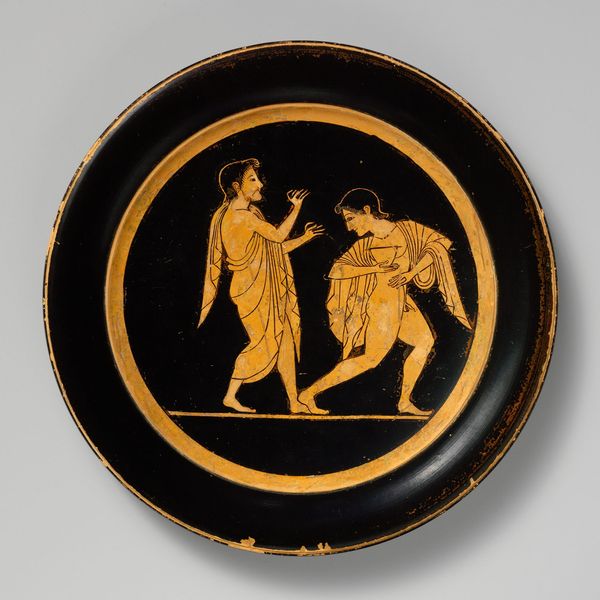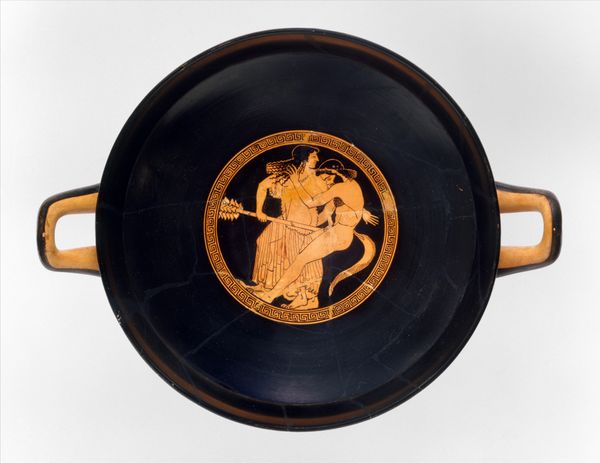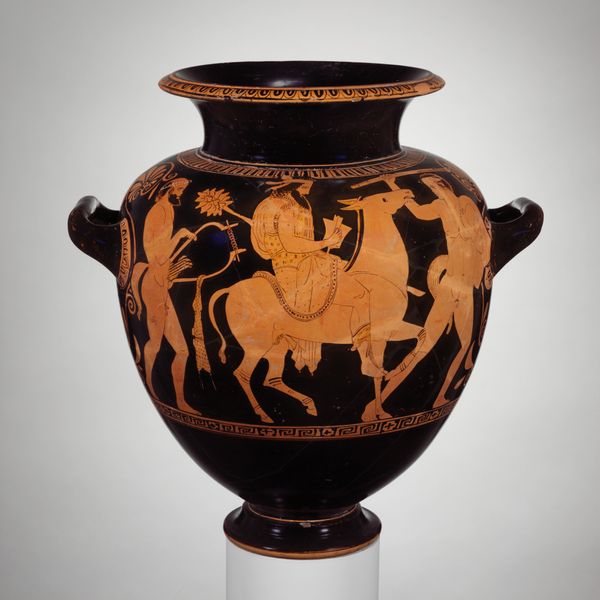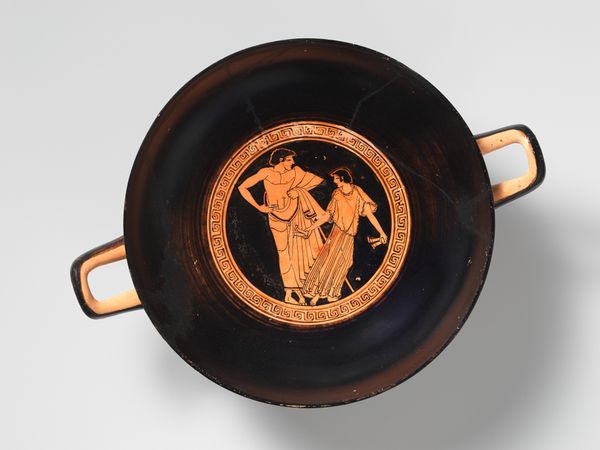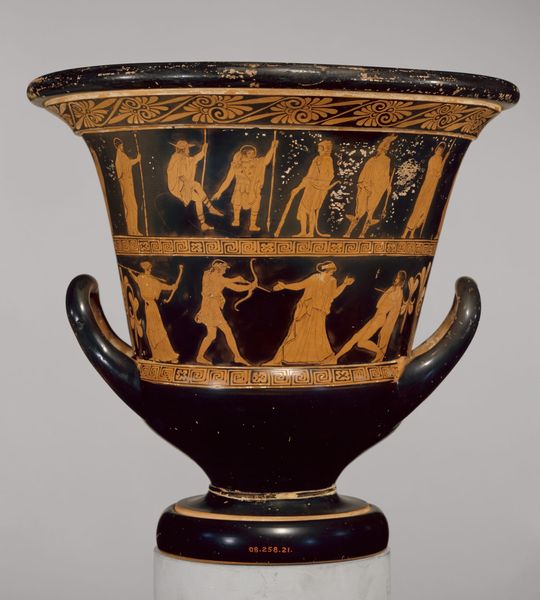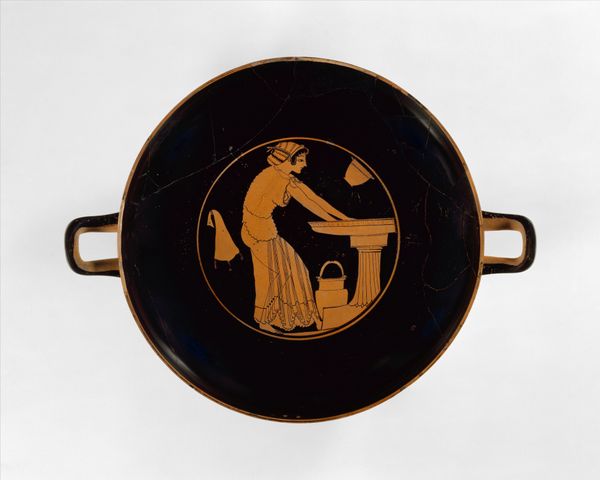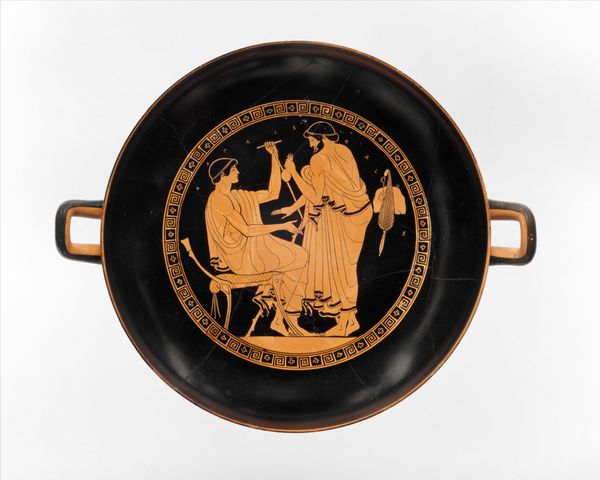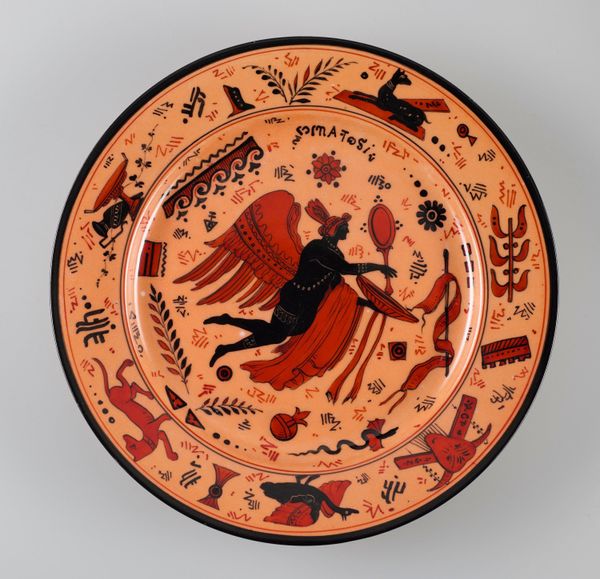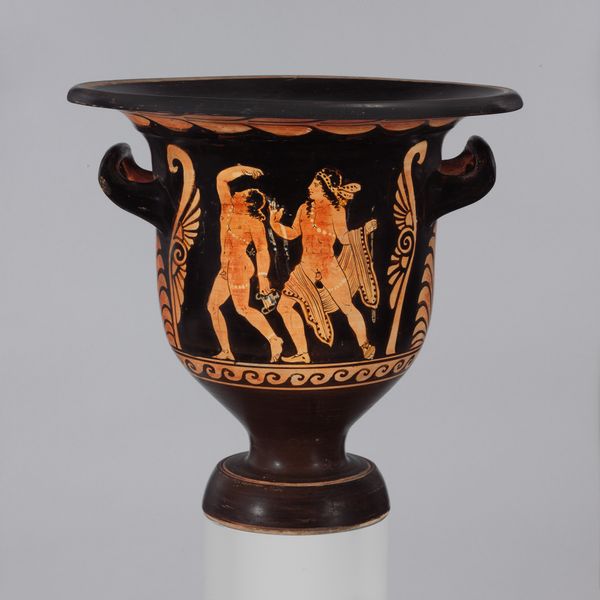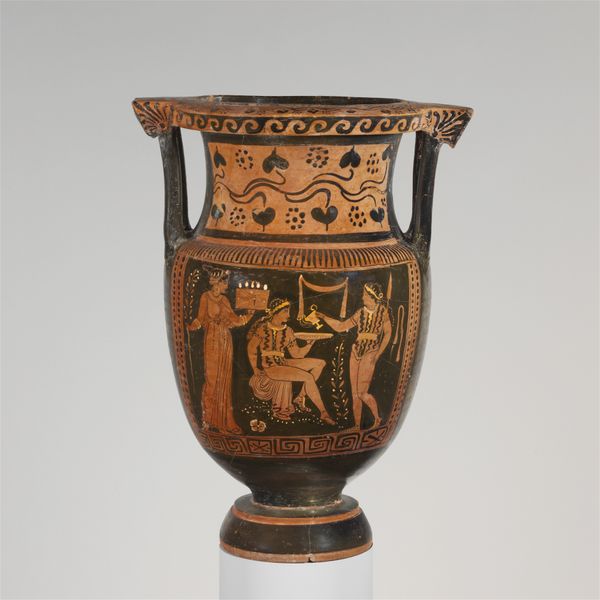
painting, ceramic
#
portrait
#
painting
#
greek-and-roman-art
#
ceramic
#
figuration
#
roman-art
#
ancient-mediterranean
#
ceramic
Dimensions: Diam.: 7 3/8 in. (18.7 cm)
Copyright: Public Domain
Curator: This terracotta plate from 520 BC depicts a curious scene. What’s your initial impression? Editor: Well, it's strikingly whimsical, almost comical. There's a man, rendered in warm terracotta tones against a stark black background, riding a rooster! It’s unexpected, lighthearted. Curator: It’s attributed to Epiktetos and currently resides at the Metropolitan Museum of Art. The image presents layers of symbolism tied to ancient Greek life. The rooster, often a symbol of virility, vigilance, and even sacrifice. How might that play here? Editor: The image disrupts the traditional hierarchies and symbol associations with animals and the human relationship. Consider the role of pottery as utilitarian objects—often connected to daily life and civic ritual. It suggests this piece was more intimate than formal. The rooster has this beautiful plumage and expression as he is being mounted – it looks intentional that the relationship is one that is human to animal as it subverts our own modern expectations. Curator: Exactly! While many pottery artifacts were for banquets, this piece uses narrative in what appears to be domestic life with its subversion of roles with humans and animals. Think of the cockfights that occurred then; this might signal victory or luck as well. Editor: Or even an act of protest through art. Consider other artworks featuring animals like Picasso's "Guernica," where the animal takes the stand for those not able to be present. I think that's where we might be in terms of analyzing this art from a historical perspective. How might one perceive and receive a man riding a rooster? Curator: Yes! There is something inherently subversive here as you mention, questioning assumed strength and dominion, particularly within its historical context. And, perhaps, subtly mocking aristocratic pretenses by portraying this seemingly noble man mounted so precariously. Editor: The plate becomes more than decorative art. It challenges accepted ideas with its unexpected image, engaging our interpretation in a cultural performance, both private and maybe public. Curator: Absolutely. The visual metaphor and composition urge audiences, then and now, to reflect on themes that speak volumes outside time. Editor: Right—prompting thoughts around culture, authority, and expectations from then to now. I keep wondering, for whom was it made, and what other images did this plate accompany?
Comments
No comments
Be the first to comment and join the conversation on the ultimate creative platform.
